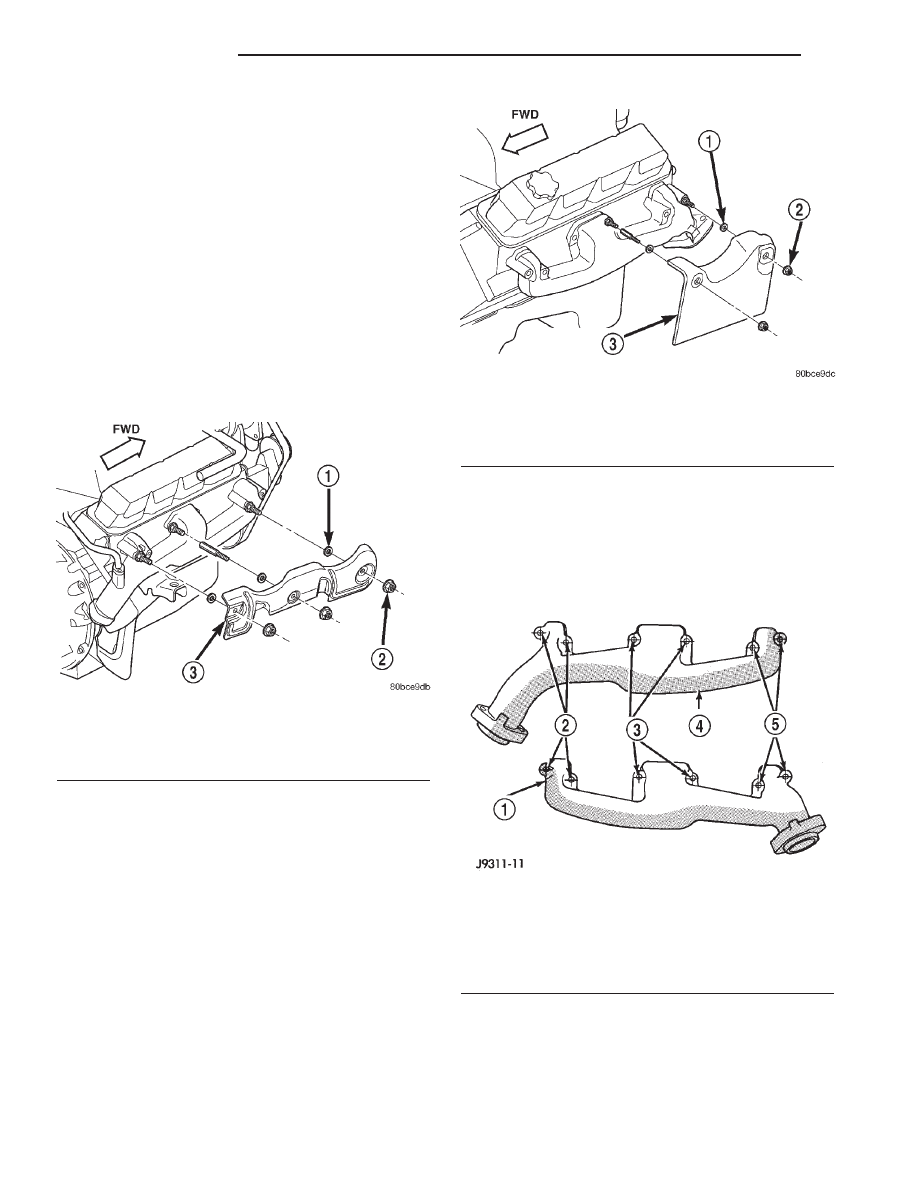Dodge Dakota (R1). Manual - part 519

exhaust gases to the exhaust pipes attached to the
manifolds.
REMOVAL
(1) Disconnect the battery negative cable.
(2) Raise the vehicle.
(3) Remove the exhaust pipe to manifold nuts.
(4) Lower the vehicle.
(5) Remove three nuts, heat shield and washers
from the right side exhaust manifold, if necessary
(Fig. 71).
(6) Remove two nuts, heat shield and washers
from the left side exhaust manifold, if necessary (Fig.
72).
(7) Remove bolts, nuts and washers attaching
manifold to cylinder head.
(8) Remove manifold from the cylinder head.
CLEANING
Clean mating surfaces on cylinder head and mani-
fold. Wash with solvent and blow dry with com-
pressed air.
INSPECTION
Inspect manifold for cracks.
Inspect mating surfaces of manifold for flatness
with a straight edge. Gasket surfaces must be flat
within 0.2 mm per 300 mm (0.008 inch per foot).
INSTALLATION
CAUTION: If the studs came out with the nuts when
removing the exhaust manifold, install new studs.
(1) Position the exhaust manifolds on the two
studs located on the cylinder head. Install conical
washers and nuts on these studs (Fig. 73).
(2) Install new bolt and washer assemblies in the
remaining holes (Fig. 73). Start at the center arm
and work outward. Tighten the bolts and nuts to 24
N·m (18 ft. lbs.) torque.
(3) Position three washers, heat shield and nuts on
the right side exhaust manifold. Tighten nuts to 24
N·m (18 ft. lbs.).
(4) Position two washers, heat shield and nuts on
the left side exhaust manifold. Tighten nuts to 24
N·m (18 ft. lbs.).
Fig. 71 Exhaust Manifold Heat Shield—Right Side
1 - WASHER
2 - NUT AND WASHER
3 - EXHAUST MANIFOLD HEAT SHIELD
Fig. 72 Exhaust Manifold Heat Shield—Left Side
1 - WASHER
2 - NUT AND WASHER
3 - EXHAUST MANIFOLD HEAT SHIELD
Fig. 73 Exhaust Manifold Installation—5.9L Engine
1 - EXHAUST MANIFOLD (LEFT)
2 - BOLTS & WASHERS
3 - NUTS & WASHERS
4 - EXHAUST MANIFOLD (RIGHT)
5 - BOLTS & WASHERS
9 - 264
ENGINE 5.9L
AN
EXHAUST MANIFOLD (Continued)